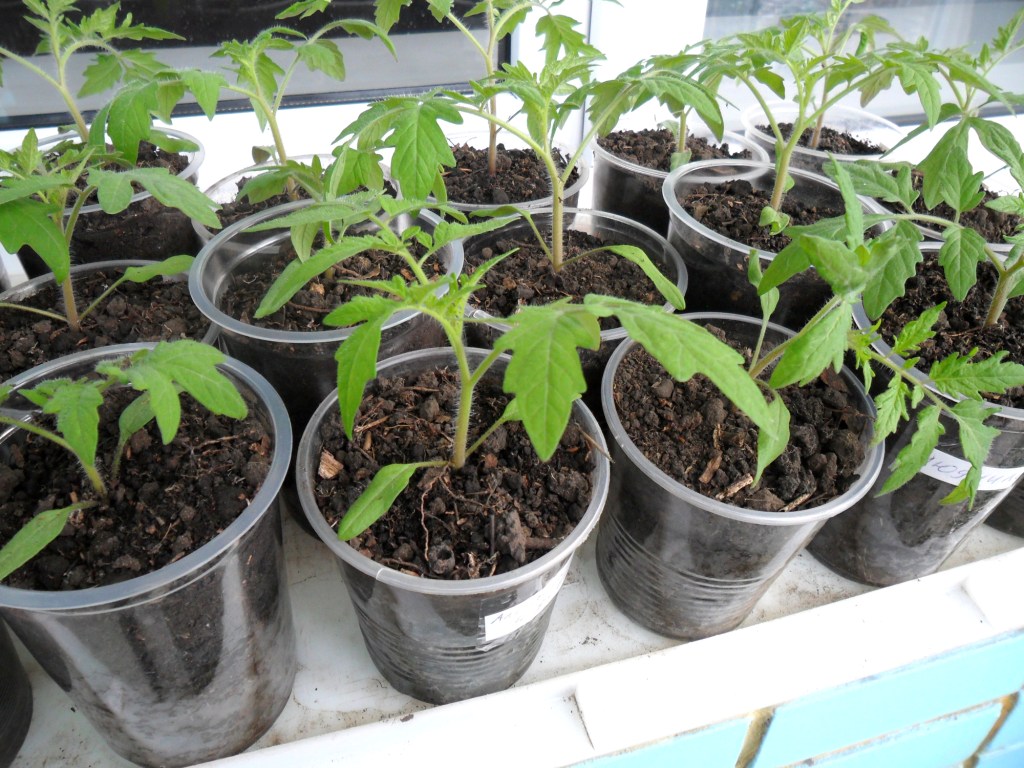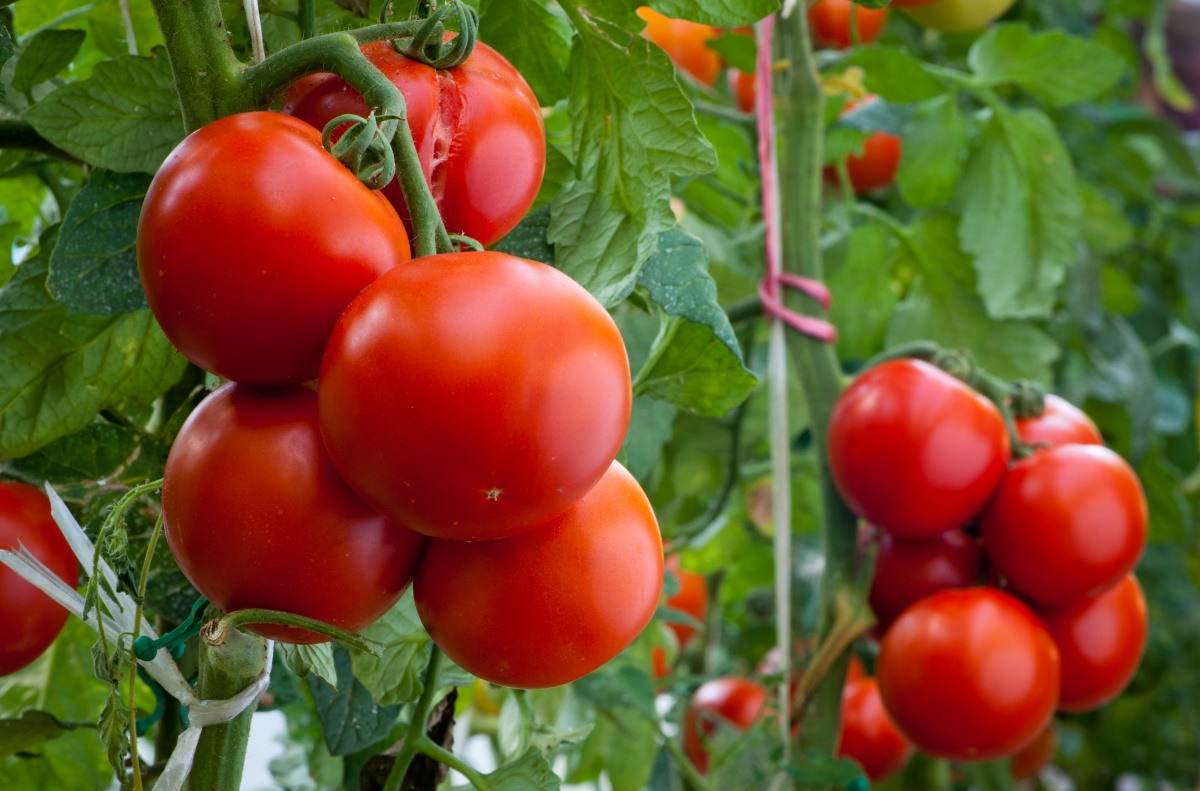Today there are many crops that are actively cultivated within a specific territory, however, outside of them remain unknown. Therefore, most have no idea what the safflower plant is. This plant deserves attention in order to consider it in detail, because it not only looks beautiful, but also has useful properties. Today it is successfully cultivated in the Caucasus, in the Kharkov and Kursk regions, as well as in Turkestan and the Crimea. Under natural conditions, this culture is found in Afghanistan and Ethiopia.
Content
What is Safflower?
I would like to start considering this annual with the fact that it represents the family of Asteraceae or Compositae. Safflower is known to specialists by other names:wild saffron, American or dye thistle and dye safflower... Safflower has gained great popularity due to its unique properties. First of all, this is due to its useful composition. The plant is rich in useful substances such as:
- isocartamine;
- cardamidine;
- luteolin glycoside;
- kartamine;
- chalconic glycosides.
Also, this culture has become widespread as an oilseed crop. It is most actively cultivated in areas where, due to the peculiarities of the climate, it is difficult to grow sunflowers and other similar plants.
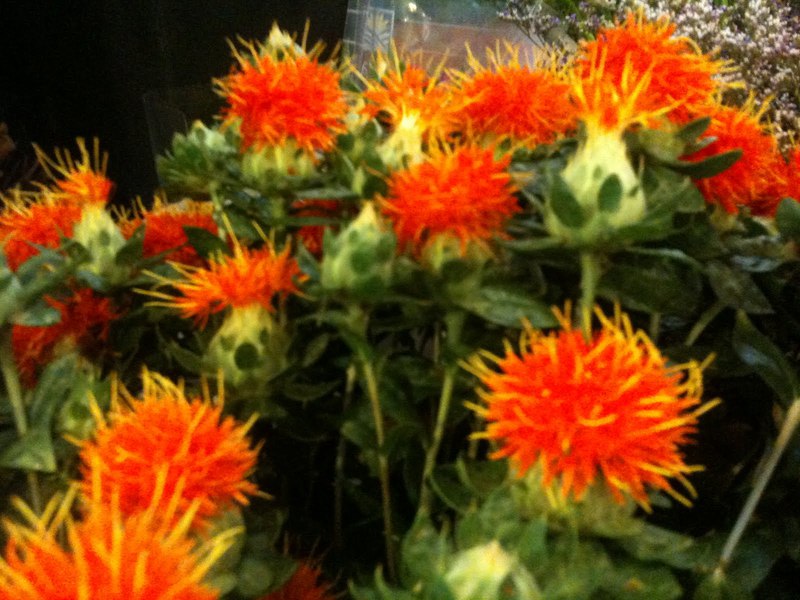
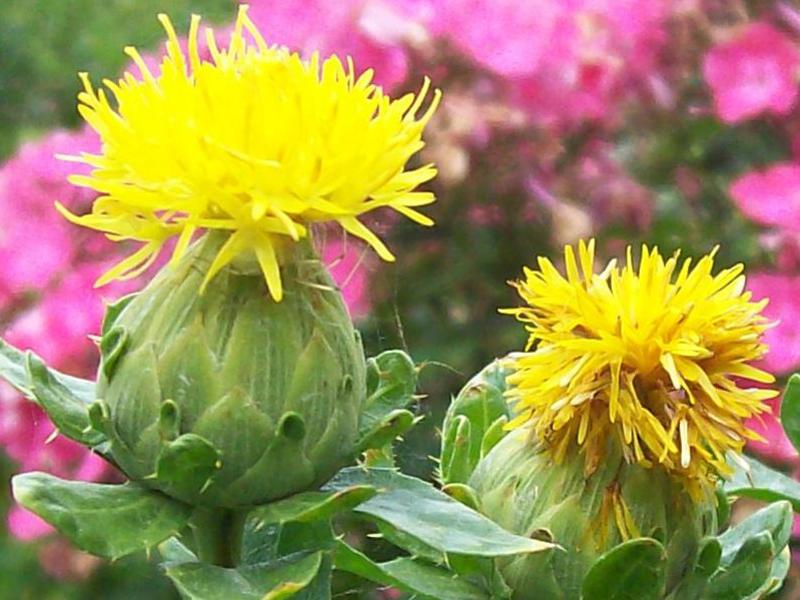
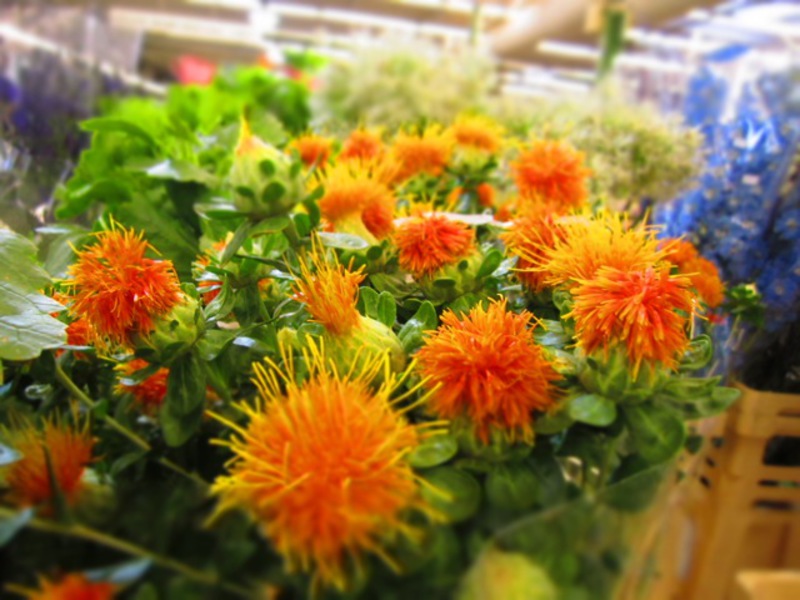
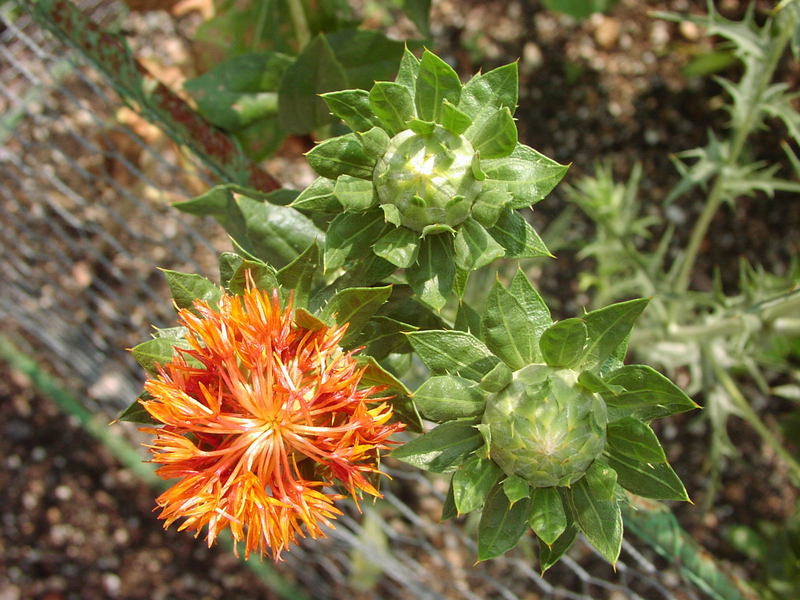
Safflower appearance
The photo of this plant must be studied first of all, because this is the easiest way to understand that it is dye safflower in front of you. But even better if you get acquainted with its characteristic features.
- this annual plant stands out for its tallness: Adult specimens reach a height of 1.5 meters. In the process of growth, the stem forms many branches, and is also characterized by the presence of a whitish gloss;
- the leaves of the plant, which have a dense structure, look special... They are oblong in shape and decorated with a scalloped border. Their characteristic color is green. The leaves located at the top are not as large as in the lower part and in the middle, they are entrusted with the function of ensuring photosynthesis. A characteristic feature of the leaves is the presence of sharp thorns;
- safflower blooms in early June, this phase lasts until September... The flowers are small in size, reaching a diameter of 3.5 cm. The petals are usually yellow or orange-red.
Beneficial features
Safflower dye is interesting for specialists and ordinary flower growers, in addition to its attractive appearance, because it can help in the treatment of diseases and not only.
Safflower oil
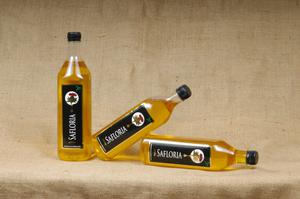 Dyeing safflower can be used not only to make healing tea, but also to process it to make oil. Hulled seeds are used as raw materials. This product is of the same quality as sunflower oil... It is used to produce good varieties of margarine. This product is especially appreciated in the East, where it is used as a substitute for saffron.Also, oil of a slightly different composition is produced from whole seeds, which is used exclusively for technical purposes.
Dyeing safflower can be used not only to make healing tea, but also to process it to make oil. Hulled seeds are used as raw materials. This product is of the same quality as sunflower oil... It is used to produce good varieties of margarine. This product is especially appreciated in the East, where it is used as a substitute for saffron.Also, oil of a slightly different composition is produced from whole seeds, which is used exclusively for technical purposes.
It is often added to white paints to avoid yellowing of the paint layer. However, the scope of application of safflower oil is not limited only to this. This type of oil is often used in soap making, as well as in the production of drying oil and linoleum. The flowers of safflower are also valuable, they contain a dye used in carpet business.
Safflower tea
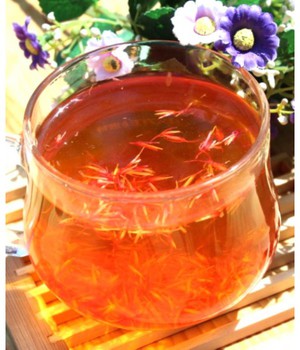 To date, there are very few medicinal plants left, the properties and features of the use of which traditional and folk medicine would not know. Most often they used in the form of tinctures, tea, decoctions, helping to cure many ailments... The same can be said about safflower. Safflower tea is a special drink that can help with certain medical conditions.
To date, there are very few medicinal plants left, the properties and features of the use of which traditional and folk medicine would not know. Most often they used in the form of tinctures, tea, decoctions, helping to cure many ailments... The same can be said about safflower. Safflower tea is a special drink that can help with certain medical conditions.
First of all, it should be noted its strong diuretic effect. Regular consumption of tea helps to heal the kidneys. For many centuries, Chinese medicine has known about the beneficial properties of this drink. According to healers, drinking safflower tea is good for those who are worried about heart failure. Those people who suffer from numbness of the limbs and anemia can feel an improvement in their condition. However, a positive effect is achieved only with prolonged use of this drink: the duration of one course is 4-6 months.
Safflower seeds
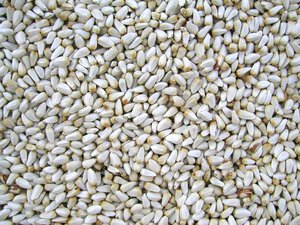 In safflower seeds, most of it is semi-drying oil - 37%, protein is also present - 12%. Safflower is an excellent alternative to traditional feed due to its high protein content. These seeds can be fed to poultry... After processing from one centner of safflower, you can get 45-50 feed units. The resulting cake is also used as animal feed. Silage made from it is very nutritious. 1 kg of this feed contains 13.3 tons of protein.
In safflower seeds, most of it is semi-drying oil - 37%, protein is also present - 12%. Safflower is an excellent alternative to traditional feed due to its high protein content. These seeds can be fed to poultry... After processing from one centner of safflower, you can get 45-50 feed units. The resulting cake is also used as animal feed. Silage made from it is very nutritious. 1 kg of this feed contains 13.3 tons of protein.
Safflower honey is also highly valued as it has a high concentration of nutrients. It contains such vital elements as:
- zinc;
- calcium;
- iron;
- chromium;
- silver and other useful trace elements.
It is also often used to treat various ailments. Safflower seeds are used to make cosmetic oils. Its regular use can improve the condition of the skin and remove the signs of many skin diseases.
Biological features
Safflower has gained high popularity not only because of the above advantages, but also because of its unpretentiousness. Sowing safflower seeds can be done in early spring as they begin to germinate at 2–3 degrees Celsius.
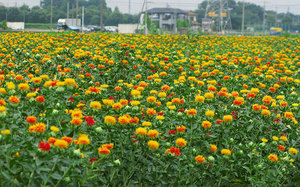 Safflower is a cold-resistant crop, so it is not afraid of short-term frosts from 4 to 6 degrees. therefore sowing seeds can be planned not only in spring, but also in autumn before winter... Moreover, the latter option is more preferable, since in this case the yield increases. However, in order for the efforts to justify themselves, the summer must be warm enough, otherwise it will not bloom and, accordingly, you will not have to rely on receiving seeds.
Safflower is a cold-resistant crop, so it is not afraid of short-term frosts from 4 to 6 degrees. therefore sowing seeds can be planned not only in spring, but also in autumn before winter... Moreover, the latter option is more preferable, since in this case the yield increases. However, in order for the efforts to justify themselves, the summer must be warm enough, otherwise it will not bloom and, accordingly, you will not have to rely on receiving seeds.
Prolonged rains have an extremely negative effect on seed maturation, since in conditions of high humidity, pollination of flowers worsens. Safflower grows best in mild drought conditions. The first shoots appear about 8-10 days after sowing... From the day of planting and ripening of seeds, an average of 100-110 days should pass. From the moment the seeds germinate, safflower begins to bloom in 70 days. This phase lasts approximately 1 month. However, the flowering itself is uneven. The central baskets are the first to bloom, and behind them are the side ones. Leaves grown close to the inflorescence remain tightly compressed, which does not allow seeds to fall out.
Watering
Safflower has a strong root system, which has time to fully form by the drought period. Therefore, at this time, you can limit the number of waterings. This culture has elongated roots and can penetrate to a depth of two meters. The leaves have a fleshy and dense structure and play an important role as they store moisture. Since safflower is very economical in water consumption, it is not afraid of prolonged drought.
Therefore, in the summer it can get by with less water, which is detrimental to many other crops. The greatest need for moisture in safflower is observed during the period of seed swelling... Also, frequent watering is necessary in the bud development phase, which is a guarantee of a high yield.
The soil
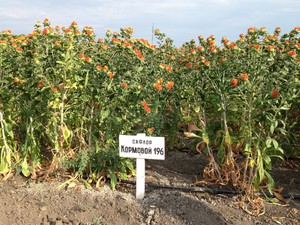 Safflower can grow on any type of soil. Infertile and salty soils are considered suitable for it. However, in order to get a high yield, it must be grown on black soil and chestnut soils. Before sowing seeds, it is necessary to prepare the site - it must be dug to a great depth. Also, this plant feels good on loamy and sandy loam soils.
Safflower can grow on any type of soil. Infertile and salty soils are considered suitable for it. However, in order to get a high yield, it must be grown on black soil and chestnut soils. Before sowing seeds, it is necessary to prepare the site - it must be dug to a great depth. Also, this plant feels good on loamy and sandy loam soils.
A favorable factor that increases the yield of safflower is close location of groundwater... But often when growing this crop in dry areas and under adverse conditions, high yields can be achieved, which other oil crops rarely show.
Sowing dates
The correct sowing time determines the success in growing any crop. In conditions of prolonged periods of drought, it is very important to sow the seeds at the first warming so that the seedlings can appear as soon as possible. Then the plant will have enough time to form a full-fledged root system before drought and not need additional watering.
Sowing of safflower can be planned at different times - this can be done at the time when spring crops are planted. Given the high cold resistance of the culture, withYou can eat seeds even at minimum temperatures... In the event of a delay in sowing, the probability of seed death is high, since they will not be able to receive the necessary amount of moisture from the upper soil layers in order to germinate.
Conclusion
Safflower is one of those rare plants that not all experienced growers know about. This culture has spread not only for decorative purposes, because it can bring considerable benefits in the treatment of diseases. Tea made from safflower leaves is healing... The oil from this plant is also highly valued. Another reason to start growing safflower on the site is the simplicity of this plant.
Due to its high cold resistance, the seeds of this culture can germinate at 2-3 degrees of heat. If she can form a well-developed root system by the drought period, then she will be able to do without frequent watering. In the case of sowing in a fertile area, you can guarantee a high seed yield at the end of autumn.
